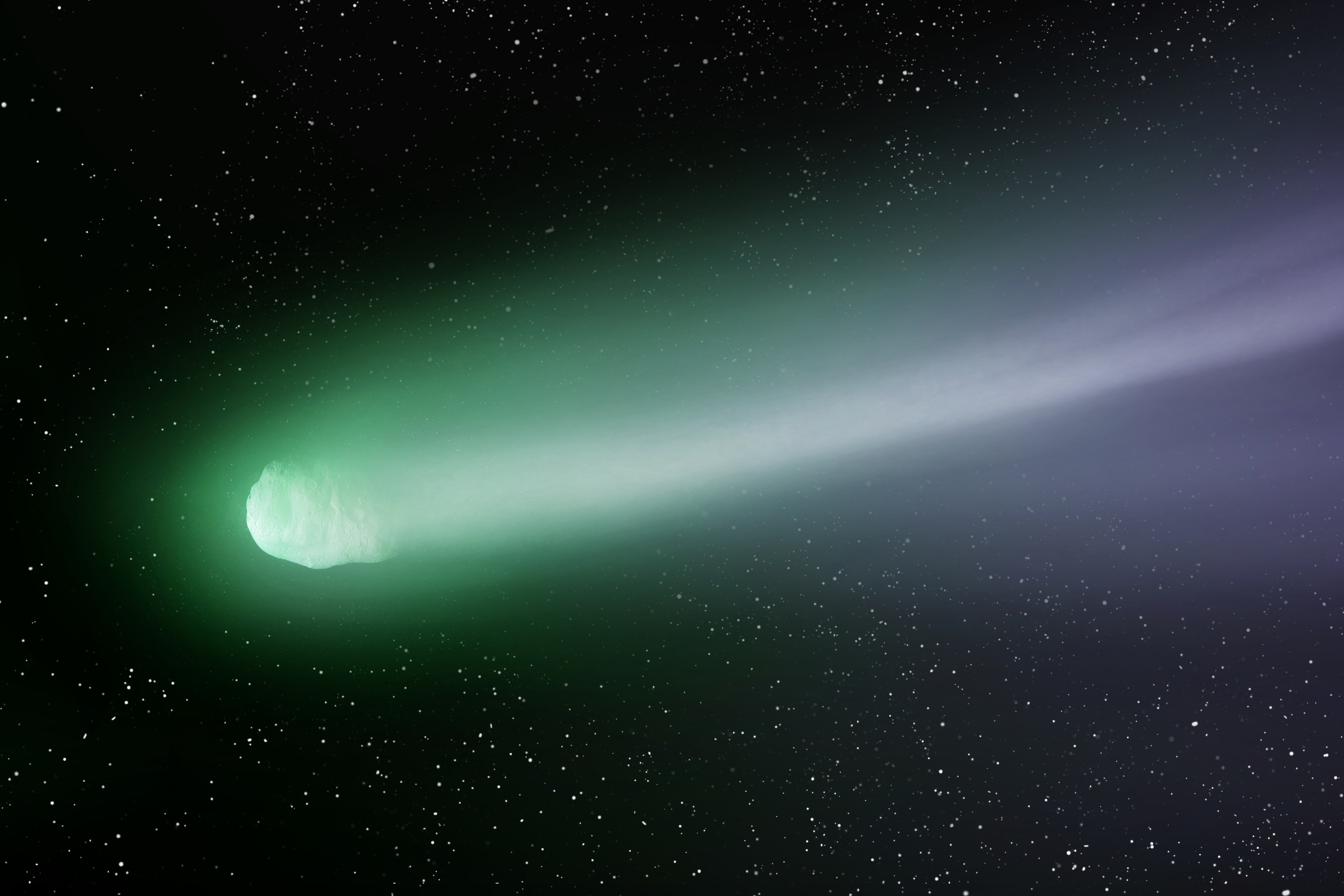Article #002: Comet C/2022 E3
Published: 01/06/2023
Comet C/2022 E3 (ZTF) was discovered by astronomers in early March 2022 using a telescope on the Palomar Mountain by the Zwicky Transient Facility.
As you can tell, the comet was named after its discovery date and is now travelling towards the Earth on January 23rd - February 7th until
it's light is no longer visible to the naked eye.
Comets are usually just frozen gases that are loosely travelling through space and affected by the gravity of all celestial bodies surrounding them. In our solar system, most comets come from the icy distant parts of our solar system and then get pulled towards the sun after it gathers some mass. After they leave that icy zone in the solar system, the sun melts their surfaces and the comets start spewing gases from their glowing cores (known as the "coma") and form a tail.
Comet C/2022 E3 is composed of mainly frozen diatomic carbon molecules. The ultraviolet radiation from the sun is absorbed by these molecules within the comet and fuse the two carbon atoms together emitting a faint green light. When two carbon atoms fuse together, they produce a Magnesium (Mg) nucleus, but after emission of the two beta particles, a heavier element like Aluminum is formed.
The predicted trajectory stats that the comet will come within a 26.4 million miles distance from the planet Earth.
Astronomers and researchers don't get many opportunities to research such objects drifting in nearby space, and so they are very excited for the rare event to occur.
The new moon on January 21st will provide the darkest skies with minimal light pollution from the moon, making it an optimal time to spy on the comet with your telescopes. Near January 30, the comet will be directly visible next to the Big Dipper and Polaris (the North Star). By following the two stars at the end of the Big Dipper's cup, you should be able to spot the comet.
The comet will look like a faint green smudge in the night sky with its glowing coma and lengthy tail.

Comets are usually just frozen gases that are loosely travelling through space and affected by the gravity of all celestial bodies surrounding them. In our solar system, most comets come from the icy distant parts of our solar system and then get pulled towards the sun after it gathers some mass. After they leave that icy zone in the solar system, the sun melts their surfaces and the comets start spewing gases from their glowing cores (known as the "coma") and form a tail.
Comet C/2022 E3 is composed of mainly frozen diatomic carbon molecules. The ultraviolet radiation from the sun is absorbed by these molecules within the comet and fuse the two carbon atoms together emitting a faint green light. When two carbon atoms fuse together, they produce a Magnesium (Mg) nucleus, but after emission of the two beta particles, a heavier element like Aluminum is formed.
Where does Comet C/2022 E3 originate from?
At the time of discovery, Comet C/2022 E3 was inside the orbit of Jupiter and was much dimmer than it is today. The wide field of view the ZTF Camera majorly aided in capturing this beauty. The comet is getting brighter as time moves on.What is so special about Comet C/2022 E3?
This green-hued comet from the outer solar system is going to swing around our planetary neighbourhood for the first time in 50,000 years. The comet will be so bright that it will be visible to the naked eye in the night sky. The comet will appear in a 2-week window between January 23rd and February 7th and is a once in a lifetime opportunity you don't want to miss!The predicted trajectory stats that the comet will come within a 26.4 million miles distance from the planet Earth.
Astronomers and researchers don't get many opportunities to research such objects drifting in nearby space, and so they are very excited for the rare event to occur.
How do I spot the Comet C/2022 E3?
In short, look to the north. The comet should be visible for sky-watchers in the Northern Hemisphere.The new moon on January 21st will provide the darkest skies with minimal light pollution from the moon, making it an optimal time to spy on the comet with your telescopes. Near January 30, the comet will be directly visible next to the Big Dipper and Polaris (the North Star). By following the two stars at the end of the Big Dipper's cup, you should be able to spot the comet.
The comet will look like a faint green smudge in the night sky with its glowing coma and lengthy tail.
My Pictures

Written by BooleanCube :]